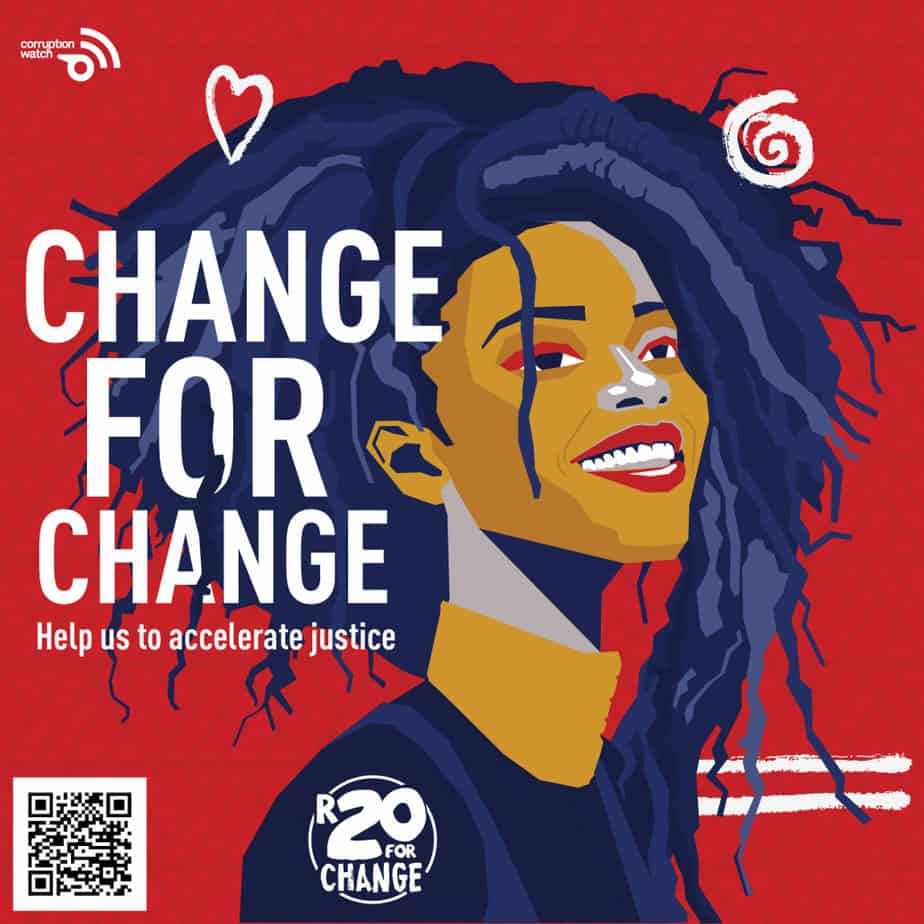|
Getting your Trinity Audio player ready...
|
Corruption Watch is one of only six organisations on the African continent whose financial transparency levels have received a five-star rating from Transparify in its recently released report titled How Transparent are Think Tanks about Who Funds Them 2016?
The Tbilisi, Georgia-based Transparify assesses the transparency levels of think tanks in terms of their sources of funding. Think tanks encompass a wide range of groups and organisations that examine some of the most pressing issues of the day, from corruption and climate change to national security and the economy. They inform national policy debates by researching topics and disseminating their findings through reports, events and online material.
But, Transparify cautions, there is always a risk that this research and advice may be influenced by the policies of the funders and therefore is neither wholly independent in origin nor unbiased. And while there is nothing wrong with accepting funding from a variety of sources, both public and private, failure to disclose all sources may lead to lack of credibility because the impression created is that of a hidden agenda.
Corruption Watch is not one of those organisations, however, and we’re proud of that. Transparify found that we’re one of a select group of organisations, out of 200 assessed in 47 countries, who deserve five-star status for their high levels of financial transparency.
Transparify rates the extent to which think tanks publicly disclose, through their websites, where  their funding comes from. Details must be available online and organisations receive a rating of zero to five stars, based on what information is out there for all to see. Institutions rated with the maximum of five stars are highly transparent about who funds them. Think tanks with four stars are broadly transparent; typically, they do not disclose the precise amounts given, but instead group their donors into several funding brackets. On the opposite end of the spectrum, the funding of think tanks with zero stars or one star is highly opaque as they fail to disclose even the names of some or all of their donors.
their funding comes from. Details must be available online and organisations receive a rating of zero to five stars, based on what information is out there for all to see. Institutions rated with the maximum of five stars are highly transparent about who funds them. Think tanks with four stars are broadly transparent; typically, they do not disclose the precise amounts given, but instead group their donors into several funding brackets. On the opposite end of the spectrum, the funding of think tanks with zero stars or one star is highly opaque as they fail to disclose even the names of some or all of their donors.
“Our researchers have documented highly transparent think tanks in 23 countries across Africa, the Americas, Asia, and Europe,” says Dr Hans Gutbrod, executive director of Transparify. “Excellence knows no borders, and that includes excellence in financial disclosure. These highly transparent institutions set a positive example for the sector as a whole, both nationally and internationally.”
If one institution can do it, all institutions can do it, Gutbrod says. Financial transparency is not difficult to achieve – unless you really do have something to hide.
 “This year, we are delighted to be able to document five-star role models in six additional countries: Bosnia, Ethiopia, Ghana, Hungary, South Africa, and Ukraine,” the report notes.
“This year, we are delighted to be able to document five-star role models in six additional countries: Bosnia, Ethiopia, Ghana, Hungary, South Africa, and Ukraine,” the report notes.
Transparency International UK has welcomed the initiative. “The Transparify initiative evaluates and promotes financial openness amongst think tanks from all across the political spectrum,” comments Steve Goodrich, senior research officer at TI UK. “In a time when the public have little trust in their political parties and politicians, we all need to do everything we can to help provide confidence in the democratic process. It’s time we all embraced this [openness] instead of hiding away in the shadows.”
Verifiable methodology
Transparify used a rigorous and reliable method of drawing up its ratings:
- Systematic and transparent approach with clear categories.
- Ratings by two separate raters.
- Adjudication process.
- Respondent validation with selected think tanks.
- Full replicability of results by third parties.
A small group of trained raters visited think tank websites, searching for financial data following a standard protocol. Each think tank was rated independently by two different raters, who worked from different lists and who didn’t know who the other person was.
In cases where two raters returned different results, an experienced adjudicator revisited the think tank’s website and determined the final score, using Transparify’s rating methodology. This ensured consistency across ratings, as well as the integrity of the process.
Once the results were in, the final scores were e-mailed to the executive director of each think tank before the report was published. This gave the organisations a chance to double-check the findings and demand adjustments if appropriate.
Transparify invites anyone to visit the websites of the organisations rated, to compare the information provided there against its rating criteria. This provides a verification for the results, which can be achieved by any interested third party. Incorrect results are swiftly checked and corrected, then announced publicly.







